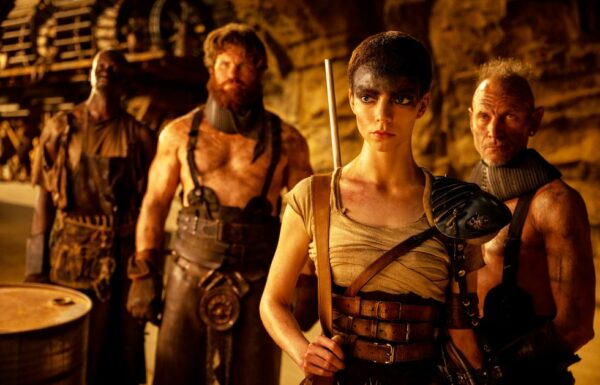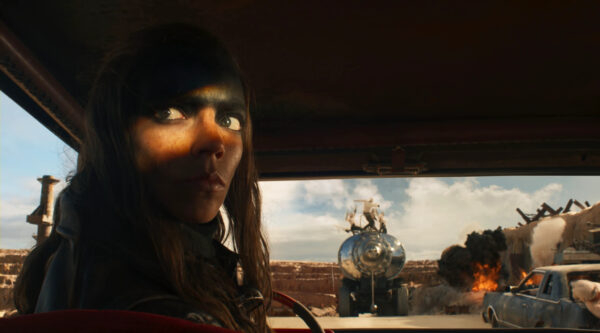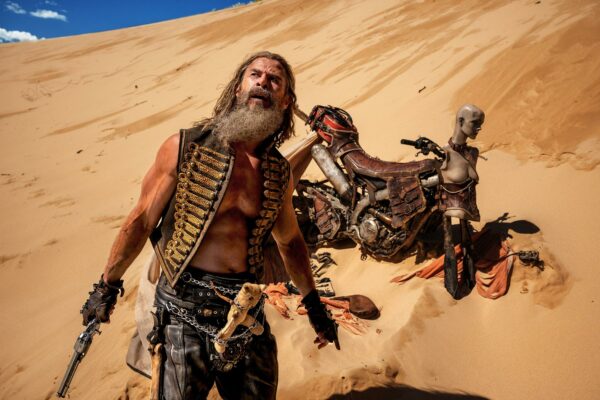
Prequels run the risk of being redundant right out of the gate. The end is already known to audiences, so how fresh can the storytelling actually be?
In the case of George Miller’s Mad Max: Fury Road prequel Furiosa: A Mad Max Saga, the surprising answer is: pretty damn fresh.
Part of what makes the Anya Taylor-Joy-led film so enjoyable is how deliberate its pacing is. Clocking in at nearly two and a half hours, the film is broken into several Kill Bill-esque chapters that chronicle the journey of young Furiosa (Alyla Browne) from childhood to one-armed War Rig driver. But Miller, who co-wrote the opus with Fury Road‘s Nico Lathouris, is so confident about the scope and scale of his prequel that Taylor-Joy doesn’t even appear onscreen in the first 2.5 chapters
That’s long after the film’s inciting incident, which is the abduction of young Furiosa by the marauding forces of Dementus (Chris Hemsworth), the leader of a large biker gang. The first chapter follows Furiosa’s mother Mary Jo Bassa (Charlee Fraser, a standout) as she desperately tracks and tries to eliminate the men who kidnapped her daughter.
The multi-day journey is obviously premeditated by the need to recover her child, but also because Furiosa’s people live in the Green Place, one of the few havens left in the Wasteland. The film’s opening text once again clarifies that climate change preceded a series of oil & resource conflicts that led to the events of both Fury Road, as well as the original Mad Max trilogy.
The journey from the Green Place into the outside (read: cruel and inhumane) world mirrors Furiosa’s evolution from precocious child to steely, determined warrior. Her experiences as a child and a teen – first among Dementus’ cruel bikers, then hidden in Immortan Joe (Lachy Hulme)’s enclave – set in motion a revenge arc against Dementus while laying the groundwork for Fury Road. This includes answering a few character-driven prequel questions, such as how did Furiosa lose her arm and wind up escaping with Joe’s breeders?

Aside from a few instances of janky CGI, Furiosa is every bit the action phenomenon as Miller’s last entry in this world. Vehicles are crashed and bodies are tortured, mutilated, and destroyed without sympathy; this is a fully realized dystopian world and there’s a great deal of pleasure to be found in Furiosa’s efforts to adapt and plot.
After being traded to Immortan Joe in an act of political jockeying by Dementus, subsequent chapters reveal how Furiosa survives: first by disguising herself as a mute boy before eventually stowing away and befriending Praetorian Jack (Tom Burke). He’s the only kind man in the Wasteland and also the driver of the recently created War Rig, which makes frequent dangerous supply runs to both Gas Town and the Bullet Farm, key strategic outposts in Joe’s escalating battle with Dementus.
What’s so impressive about the film is not just its ability to craft dazzling new action set pieces (though it does that in spades), but how Miller and co. create genuine audience investment in Furiosa’s revenge plot. Despite knowing where the one-armed warrior will end up in Fury Road, Miller and Lathouris generate genuine tension in multiple set pieces, while simultaneously building anticipation for Furiosa’s inevitable climactic showdown with Dementus.

Not only is Taylor-Joy delivering a compelling and completely believable action heroine performance, but she does so in near silence. Furiosa is non-verbal for long stretches of the film; the actress imbues the character with purpose and gumption primarily via her facial expressions and the character’s action. Case in point: in one of the film’s best set pieces, Furiosa has an opportunity to escape on her own, but she returns to the Bullet Farm to assist Jack defend himself against ambush.
None of this would work nearly as well without Hemsworth’s compulsively watchable villain. Dementus is simultaneously despicable, conniving, pathetic, and captivating all at once. It’s a masterclass of multifaceted villainy (and frankly something I didn’t know the Aussie hunk was capable of). He’s a mix of everything audiences crave in an antagonist: he’s funny and he’s threatening, but he’s also deeply flawed, particularly in his desperate bid to obtain – and retain – power.

The whole film hinges on the battle of wills between the two adversaries, even though Dementus is barely aware that Furiosa is closing in on him until their final confrontation. This occurs after an exhaustive late-in-the-film battle montage (the events of which could be its own Mad Max Saga spin-off) at a time when the film feels like its running on fumes.
Thankfully Miller and co. rally for a satisfying and surprisingly emotional finale. The face to face, no holds barred battle between Furiosa and Dementus feels overdue but well-earned, which only makes the unexpected outcome that much more satisfying, garish, and appropriate.
In the dystopian world of Mad Max, you would hardly expect anything less. 4.5/5
Furiosa: A Mad Max Saga is in theatres May 24, 2024